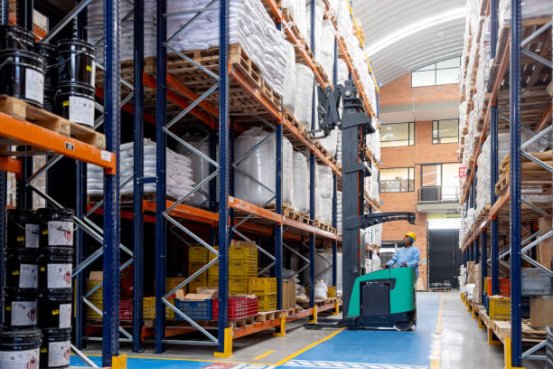Revolutionizing Warehouse Operations with Smart Racking
Efficient storage is a cornerstone for businesses seeking to cut costs and streamline operations. Modern warehouse racking systems provide structured, accessible solutions that optimize space utilization while enhancing workflow efficiency and inventory management.
Efficient storage is a cornerstone for businesses seeking to cut costs and streamline operations. Modern warehouse racking systems provide structured, accessible solutions that optimize space utilization while enhancing workflow efficiency and inventory management.

Understanding Warehouse Racking
Warehouse racking refers to engineered storage systems designed to securely hold goods on pallets or shelves. Composed of vertical frames and horizontal beams, racking creates multiple levels for organized inventory placement and easy retrieval. Acting as the backbone of warehouse operations, these systems ensure products remain safe, accessible, and systematically arranged.
Types of Warehouse Racking Systems
Different operational demands necessitate diverse racking solutions:
-
Selective Racking – The most common type, providing direct access to every pallet for rapid retrieval.
-
Drive-In/Drive-Through Racking – Allows forklifts to enter pallet lanes, maximizing storage density.
-
Push Back Racking – Uses inclined rails for storing pallets, offering high-density storage while preserving accessibility.
-
Pallet Flow Racking – Employs gravity rollers to move products efficiently, ideal for fast-moving inventory.
-
Cantilever Racking – Suited for long or oversized items such as pipes, lumber, or furniture, featuring open-front access.
-
Double-Deep Racking – Stores pallets back-to-back, increasing storage density but requiring specialized forklift equipment.
Enhancing Efficiency Through Warehouse Racking
Racking systems transform vertical and underutilized space into productive storage zones. Organized storage reduces time spent locating items, accelerates order fulfillment, and improves labor efficiency. Stable structures also minimize product damage, lowering replacement costs and preventing operational disruptions caused by mishandling.
Advantages of Implementing Warehouse Racking
Racking systems deliver several strategic benefits:
-
Customizability – Adaptable to various warehouse layouts and sizes.
-
Flexibility – Adjustable for evolving inventory types and storage needs.
-
Space Optimization – Maximizes vertical and horizontal capacity.
-
Safety – Reduces accident risk and product damage with systematic storage.
-
Accessibility – Enhances speed and ease of item retrieval.
Maintaining Warehouse Rack Safety
Ensuring safety is critical in warehouse operations:
-
Regular Inspection – Check for wear, damage, or structural weaknesses.
-
Weight Limit Compliance – Avoid overloading racks to prevent failures.
-
Employee Training – Educate staff on safe loading, unloading, and operational protocols.
-
Clear Aisles – Maintain unobstructed walkways for safe access.
-
Routine Maintenance – Conduct scheduled repairs to reduce downtime and accidents.
Selecting the Right Racking Solutions
The correct racking system can dramatically influence operational efficiency and safety. Businesses should assess warehouse layout, inventory flow, and operational requirements before making a decision. Expert consultation ensures the chosen system meets present demands and accommodates future growth.
Investing in warehouse racking goes beyond adding storage—it’s a strategic decision that enhances productivity, safety, and overall storage value. By evaluating operational needs, selecting appropriate racking, and adhering to best practices, organizations can secure long-term efficiency, cost reductions, and a streamlined warehouse environment.
References:
https://www.shipbob.com/blog/warehouse-rack/
https://www.exotec.com/types-of-warehouse-racking-differences-and-benefits/
